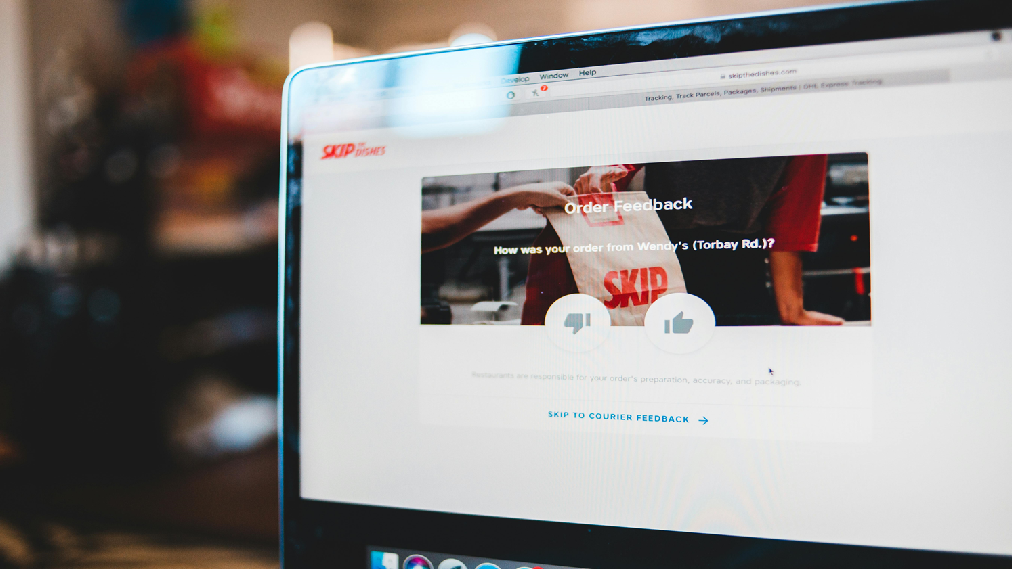7 Ways to Improve Your Ecommerce Conversion Rate With Social Media
Out of the world’s 8 billion people, 4.9 billion are on social media. That’s a lot of opportunities to put your brand in front of potential customers.
Businesses worldwide understand this. That’s why the social media marketing industry has continued to flourish over the years.
Businesses know if you want to effectively market to a specific audience, you can’t expect them to come to you. You need to meet them where they are.
Ecommerce businesses can find their audiences on social media. It’s all a matter of knowing who your target demographic is, what platforms they use, and how to best get your ads and information in front of them.
Social media is an ad-heavy environment, so you’ll need to use specific targeting measures and social media marketing skills to boost your conversions on these popular platforms.
But with so many social media platforms out there and so many competing businesses all vying for the same customers, how can you ensure that your social media efforts will be enough to reach your intended audience?
We’ll answer that question in this article. We’ll break down several ways to appeal directly to your ideal customers on social media and turn those interactions into conversions.
What kind of conversions can social media help with?
As an ecommerce brand, you need to keep a careful eye on your conversion rate. It’s a metric that’s absolutely vital to your continued success and ongoing growth initiatives.
That’s because improving your conversion rate is crucial to increasing sales and revenue. One effective way to do this is by leveraging social media platforms to drive traffic to your website and engage with potential customers.
One brand that does this exceptionally well is StudioSuits, which specializes in high-quality custom suits for men.
StudioSuits uses social media to showcase its products in a visually appealing way, with stunning photos and engaging captions that highlight the unique features of its suits. By consistently posting on social media, the company has built a loyal following of thousands who are interested in its products.
But it's not just about posting photos and hoping for the best. StudioSuits also uses targeted advertising on social media to reach potential customers who may not have discovered the brand otherwise.
By using data and analytics, it creates highly effective ad campaigns that drive traffic to its website, which ultimately leads to more sales.
But are sales the only conversion you should concern yourself with on social media? Your knee-jerk reaction might be to say yes. After all, sales are the ultimate conversion, right?
But conversions are so much more than simple sales. Conversions are the desired actions a customer takes. You can use social media to nudge the customer to take those actions and generate the outcome you’re looking for. And hey, don't forget about subscriptions, which are a fantastic way to get customers committed to your product on a recurring basis.
What kinds of conversions can you use social media for other than sales? For starters, you can use social campaigns to generate more social media engagement, such as getting likes, comments, and follows.
Additionally, social media can help with brand awareness, gaining YouTube subscribers, netting new newsletter subscribers, ebook downloads, and webinar registrants. As well as any other action a customer takes to move them through your sales funnel.
Now that we know how to define a conversion, let’s get into some specifics regarding what you can do on social media to improve your ecommerce conversion rate.
How to use social media to improve ecommerce conversions
1. Boost posts
The first and most direct way to get conversions from social media is to run a social media ad campaign. These campaigns are offered on just about every social platform, including TikTok, where short-form videos can drive high engagement. Learn how to launch your e-commerce business on TikTok and other platforms to reach your specific audience and to maximize your conversions.
Armed with a wealth of demographic information, you can use social media to put your content in front of the eyes that need to see it the most. Through social media targeting, you can focus the audience for your ad content based on the user’s:
- Age
- Gender
- Geographic area
- Marital status
- Interests
- Profession
- Dislikes
- And much more
When, you can choose how you want to budget for your campaign. There’s pay-per-click, pay-per-impression, and even pay-per-conversion.
This is far better than other, more traditional advertising where you just put up a billboard or place an ad and cross your fingers that it'll generate interest.
With social media ads, you’re paying specifically for the actions you want and you can easily track your return. You’ll see exactly what works and what doesn't, so you can make adjustments in future campaigns.
2. Use hashtags
Hashtags are a great way to draw attention to your business on social media. They're a simple, effective way to get your product in front of more eyes. Regardless of your business size, using hashtags makes your business more searchable online.
Each social media platform has an “ideal” number of hashtags per post. Capitalize on this and reap the rewards.
Take this Lubbock florist as an example in the photo above. It uses a variety of relevant hashtags on social media posts to reach a wider audience. It also follows the ideal number rule for Instagram by including five hashtags for this post.
Using hashtags, you can organically reach people interested in what you’re presenting. For example, the hashtag #springflowers in the above example would show up for anyone searching for spring flowers.
But you shouldn’t just make up your own hashtags. Do some hashtag research first, and determine what tags are trending in your industry and with your audience. Have a look at the kinds of posts others are doing under those tags.
Look for posts getting the most attention, i.e., the most likes and comments. What are they doing right? How can you do that same thing more effectively?
Once you understand how your peers and rivals are using hashtags, you can start your own hashtag strategy that'll put eyes on your posts and inevitably push people toward conversions.
3. User-generated content
While it’s important to know how to craft high-quality social media content, you can also use content others create. No, we’re not talking about stealing your competitors’ content. We’re talking about the content created by your users.
User-generated content should be a major part of any ecommerce company’s social media strategy. UGC can mean many things, from photos to reviews and anything else your audience creates that’s relevant to your business.
People trust their peers more than corporate messaging, so sharing someone’s positive, organically shared experience creates more trust in your prospective customers.
UGC is a critical aspect of making your audience feel like they know you. Posting pictures and stories from your customers gives them the feeling that they are a part of your business and that their opinions matter. A great example of sharing UGC would be this story highlighted by Tailor Brands.
(Image Source)
It showcases stories by customers sharing their experiences as well as the products they created using the company’s services.
Additionally, Starbucks is famous for sharing UGC effectively. The image below comes from a video the company shared by a customer with a large following of over 100,000 on Instagram.
Prospective customers can relate to and trust an honest review from a real person sitting in their car. By sharing this user-generated content, Starbucks creates social proof for its new product and generates new business.
As an ecommerce retailer, you can do this too. Simply find content created by your customers and share it with their consent.
You can even run a UGC contest for a prize, asking customers to share photos and experiences about your products. Then, feature the entrants on your page and stories.
4. Add shop buttons
If you’re trying to push sales conversions, you can improve your chances by making the process as simple as possible. That’s why adding “Shop Now” buttons on social platforms like Instagram and Facebook can be useful.
These buttons allow customers to click through and purchase products directly without jumping through any hoops. Moreover, ensuring that your courier service is efficient and reliable will further boost the confidence of your customers. You can push the product in question, hype its features, share some photos or a video, and get an immediate sale right from Facebook or Instagram.
Adding shop buttons to your posts and a reliable courier service removes roadblocks and makes the already user-friendly e-commerce shopping experience even more convenient.
5. Start a Facebook group
Everyone likes to feel as though they’re a part of something. That’s why creating communities around your company can help move the needle and create a sense of brand loyalty among your customers.
The group can be a place where you launch exclusive offers that users can only access through social media posts in the group. Additionally, it’s a place where customers can interact with you and one another. It can be a support channel where they can raise questions and even support one another.
When you want people to join your group, you can’t go wrong with a feeling of exclusivity. Make it known that the group is free to join and members have access to special promotions and deals that non-members don’t get. That'll make the group more appealing to the masses, and you should start to see new members pouring in.
Just make sure that you stay engaged with the group or have trusted moderators. Troublemakers and trolls are out there, and many take advantage of the internet’s anonymity.
Have clear, fair rules in place and make sure you have a vigilant admin team that can step in to keep the peace when necessary. Keep the group a safe and positive place.
6. Capitalize on existing communities
On top of promoting your own group, become active in other existing groups within your industry. While you shouldn’t interfere in the communities created by your competitors, simple help groups and social groups related to your niche could be a great place to prove your knowledge and build trust with prospective customers.
Promoting product categories related to your ecommerce business is a good way to capitalize on adjacent niches.
An online pet store may consider weighing in on pet care groups, and offering grooming or training tips to pet owners with questions. You can offer informational guides on different dog breeds such as Irish setters, pugs, American bulldogs, rottweilers, mastiff, etc. Once they realize that you are offering sound solid advice and engaging with the community, they'll look to you for items and services like pet supplies, dog repellents for the yard, grooming products, and even specialized services like dog insurance.
7. Bring on influencers
Social media influencers represent a solid marketing opportunity for ecommerce businesses of all sizes. An influencer is a person on social media with a loyal following. Typically, these people communicate with followers through product reviews, demos, and general life updates.
By working alongside these influencers, you can push your products out via social media to a targeted audience using a channel they know and trust.
Of course, you’ll need to compensate the influencer for this, like any other marketing venture. What that compensation looks like depends on the influencer in question.
Some smaller influencers will accept free products as payment. For example, a beauty products influencer who loves your store might be willing to promote your products in exchange for free makeup.
Then you have commission-based influencers. These personalities typically use a referral link or discount code that’s trackable and attached to an exclusive offer. You’ll be able to see every conversion that comes through from each influencer and pay them a percentage of every sale they bring you.
Larger mega-influencers, the ones with the largest followings on Instagram or with a lot of followers on TikTok, typically require up-front payment. The trade-off here is that you’re getting a lot of potential eyes on your products, but you’re also taking a risk in paying out without a guaranteed return.
Conclusion
Social media can be a great place to boost your ecommerce conversion rate. By implementing the above-mentioned tips and tricks, you can leverage the power of social media for the benefit of your business.
Remember to always check analytics and compare them against your KPIs and goals. See which ventures work and which don’t. Then, double down on your successes.
Rinse and repeat. You got this.













